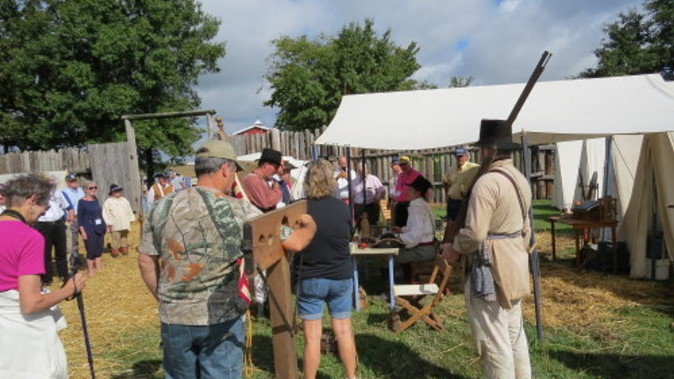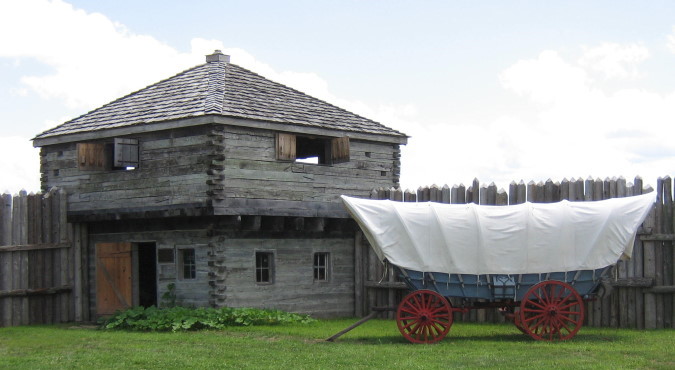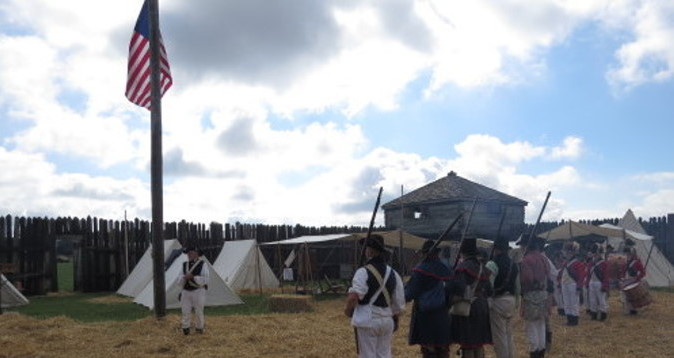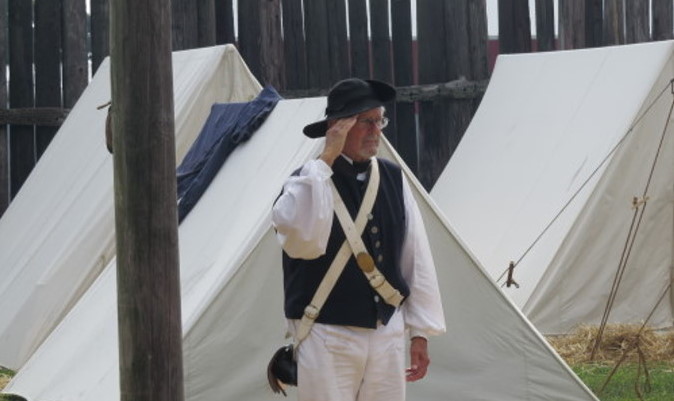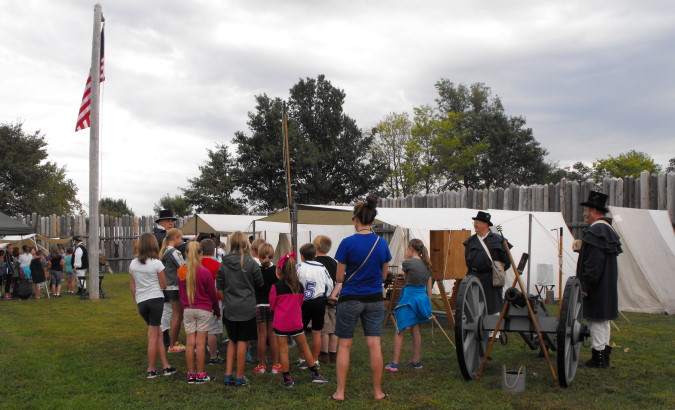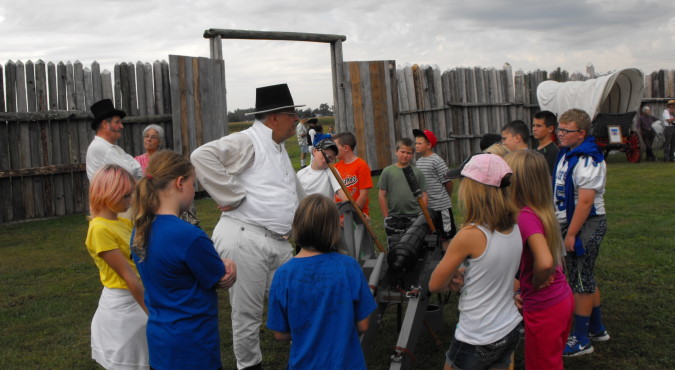History of Hill's Fort
Hills Fort played an important part in the opening of the Northwest Territory, making the fort a significant part of our heritage.
The British made alliances with various Indian tribes encouraging and supporting attacks on settlers. The increasing hostilities on the vast frontier were a leading cause of the War of 1812 with Great Britain, lasting until February of 1815.
With expansion of the settlements in the Illinois Country it became necessary to build a string of forts to serve as military stations to protect the scattered settlers from Indian attacks. Three forts were built in Bond County: Jones, Lindley, and Hill's Fort.
Hill's Fort may have been built as early as 1806 at the time of settler arrival. Records indicate that it was in existence in 1808. The fort location appears on an 1808 survey map by Capt. Isaac Hill, leader of a team commissioned by Thomas Jefferson to survey the Illinois Territory. The fort consisted of a blockhouse and stockade enclosing two cabins.
Three separate Indian attacks are associated with Hill's Fort. June 2, 1811, the Cox family cabin north of Pocahontas was attacked, with one child killed and one kidnapped. In August 1812, Henry Cox and his son were killed at their cabin site on Beaver Creek. On September 9, 1814, thirteen Rangers and civilians were bush-wacked outside the fort. Four were killed and three injured.
In 1817, Bond County was created and named for the first Governor, Shadrach Bond. The legislature fixed Hill's Fort as the temporary county seat. At that time the boundaries of Bond County were immense, including portions of today's Clinton and Fayette counties south and east, and north to the shores of Lake Superior.
Earliest records are preserved from Hill's Fort and include court and marriage dockets. The Bond County seat was moved to Perrysville later, and in 1821 to Greenville.
No longer useful as a fort or county seat, Hill's Fort was abandoned and fell into ruin. The site was consequently lost over time. In 1918 the Benjamin Mills chapter of DAR purchased land and placed a memorial stone near the site. Ranger gravestones were set in 1988 by the Bond County Genealogical Society.
This photo shows the actual location of the fort and the monument to the lives lost. In October 2001, a local archaeology student, Jenny Simpson, with U.S. Corps of Engineers assistance, discovered the original Hill's Fort site using a protron magnetron and radiometer.

Building the fort took years of work by
many different volunteers. Recently, we completed the drain line
from the fort to the railroad completed work on the forge.
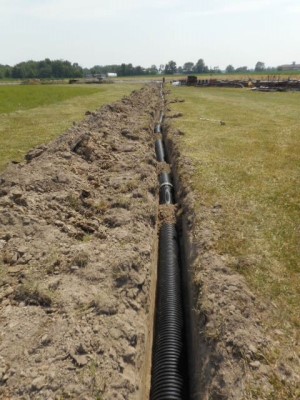
Maintenance of the existing structures continues with some
deteriorated cross members replaced with white oak.
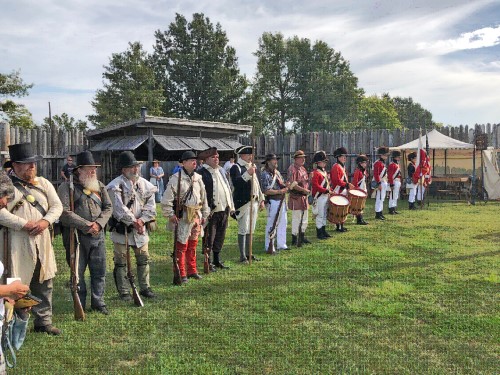
Preparing to raise the flag during Rendezvous in September 2023.
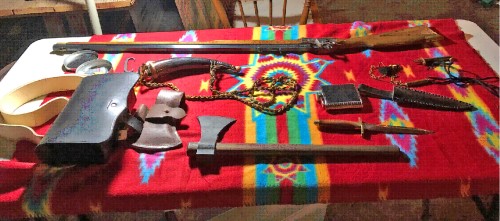
Some of the Weapons displayed during Christmas open house in 2023.


